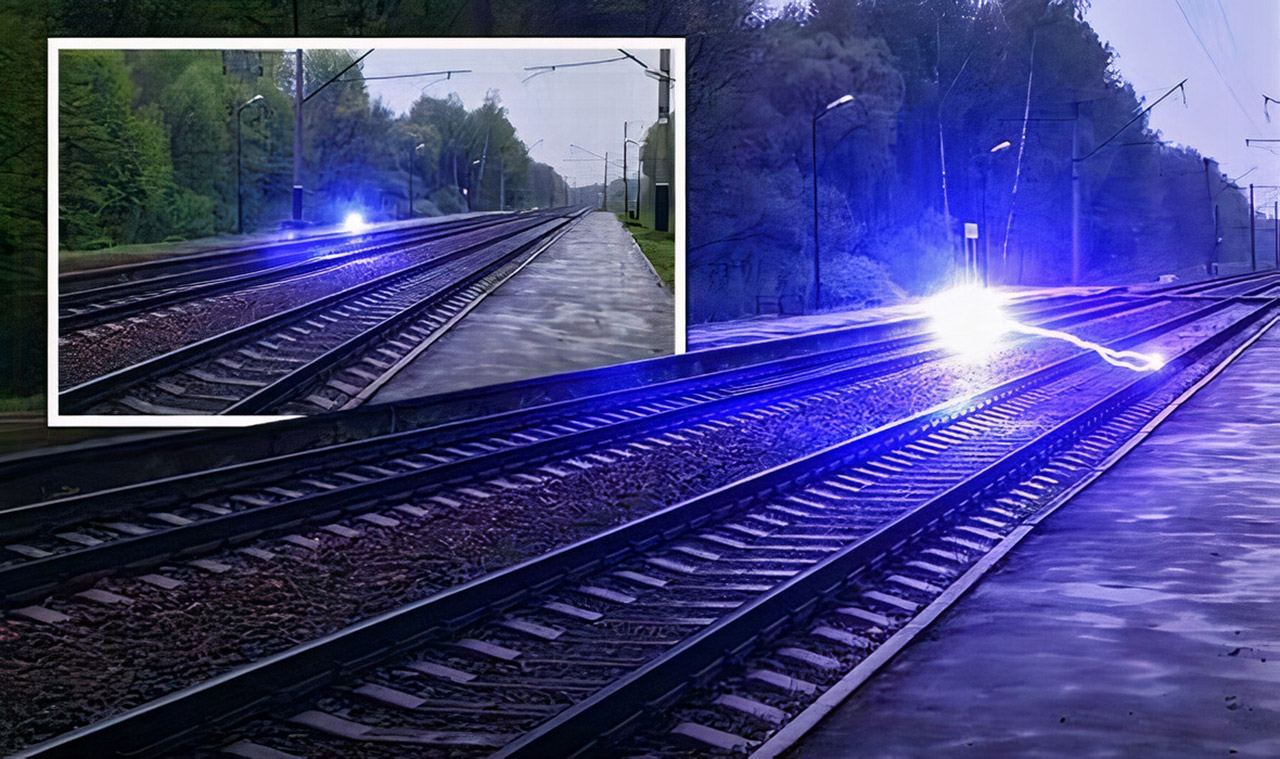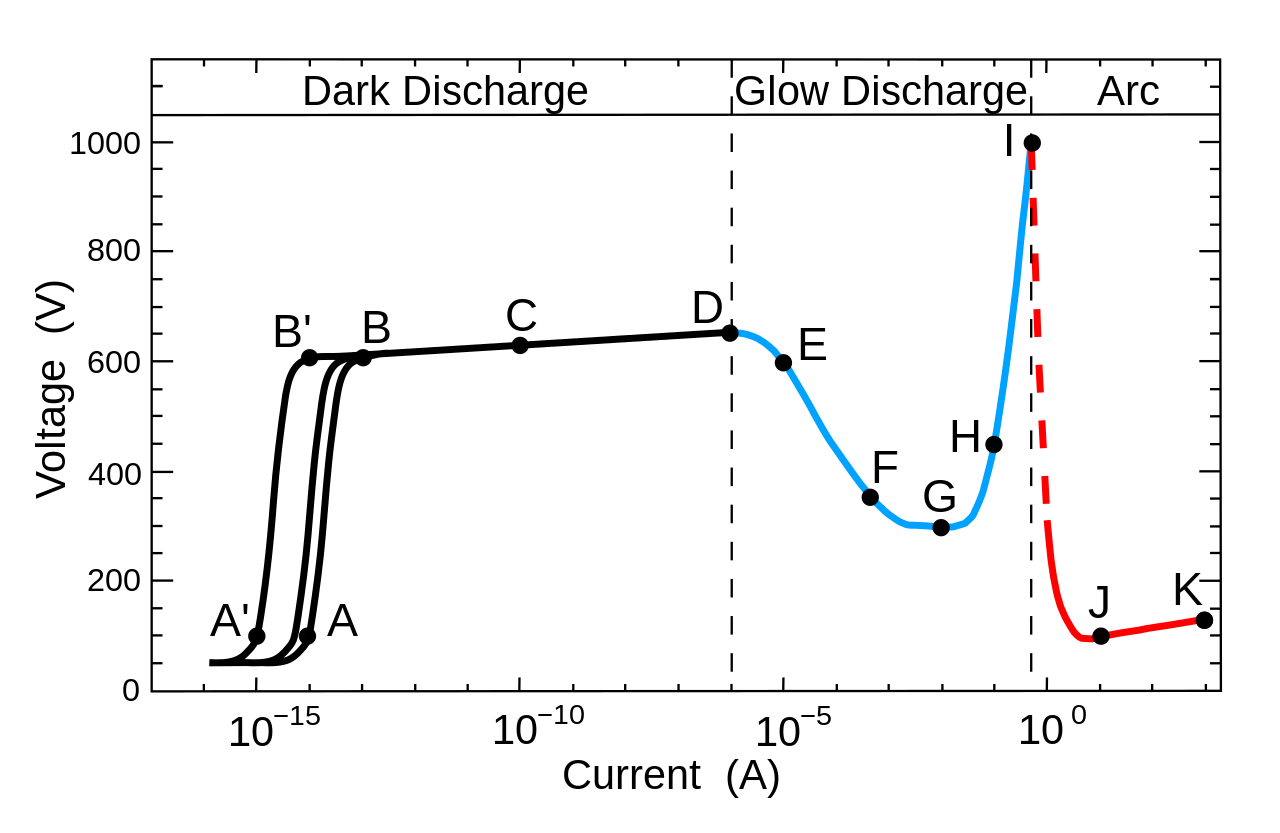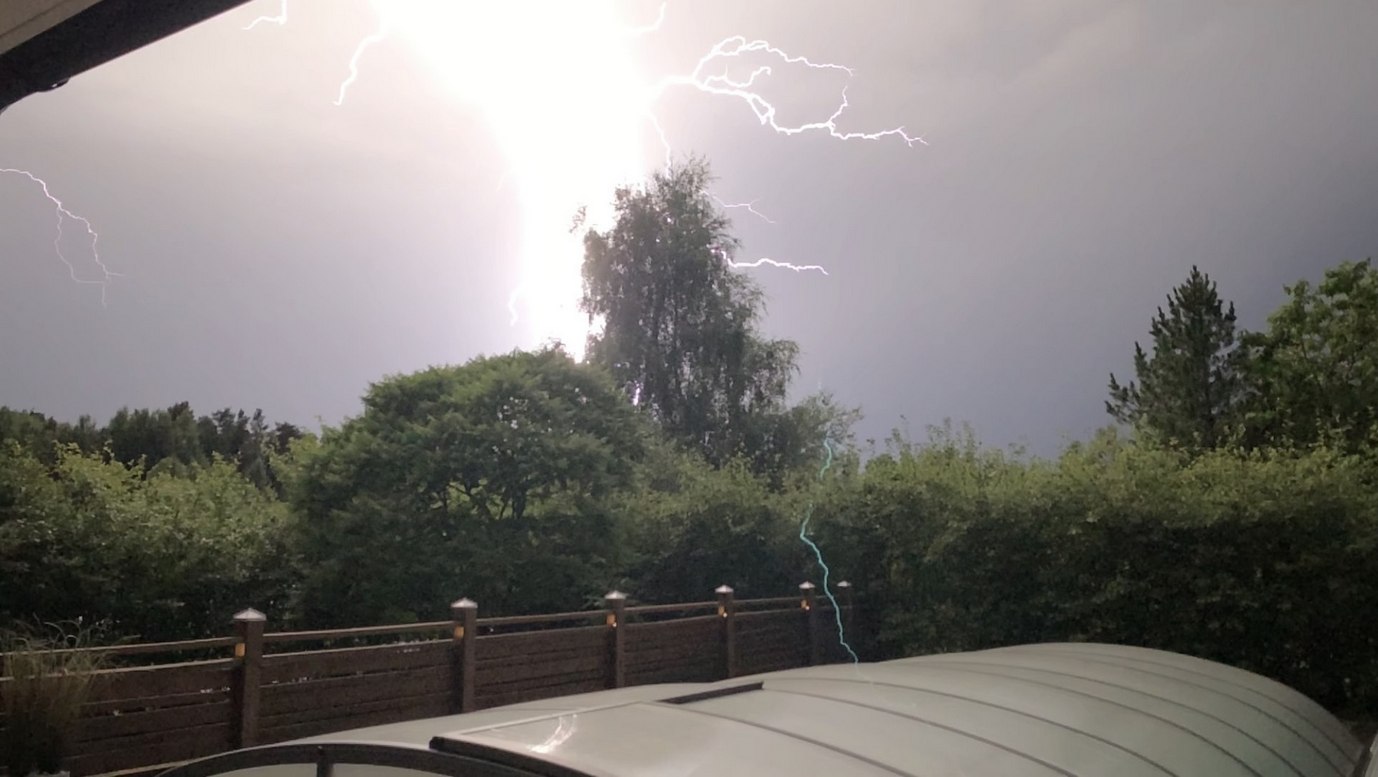COMMENT TO THE PAPER OF "AN INTERPRETATON OF BALL LIGHTNING"
(Sept. 2025)
István Bencsik: "DESCRIPTION OF BALL LIGHTNING" article, https://bencsik.rs3.hu/component/content/category/540-lightning-is-a-discharge-with-negative-electrical-resistance.html?Itemid=101 and its short summary is: ball lightning -like lightning in general- consists of ionized oxygen and nitrogen molecules, plasma, and is electrically neutral from a distance. One of their essential characteristics, like lightning in general, is the negative differential resistance, which is a phenomenon observed in discharge tubes, related to electron avalanches and plasmas. At the ignition voltage of the air, the electrons have enough energy to be capable of thermal emission, and arc light appears. Arc light is characterized by thermal electron emission, the plasma may also contain multiply ionized particles, and their temperature increases dramatically above the breakdown voltage (can be 5000-10 000 degrees Kelvin, or more), which is characteristic of ball lightning. The following figure shows a ball lightning, as well as many references* at the end of the article.

Gömbvillám (https://www.24h.com.vn/media-24h/bi-an-hien-tuong-set-hon-cuc-hiem-trong-tu-nhien-c762a1479345.html)
At a voltage lower than the ignition voltage of air, the glow of embers, characterised by electron avalanches, appears. At voltages higher than the ignition voltage of air, the electrons are already sufficiently energetic to be capable of thermal emission, which is the characteristic of arc flash. In plasma, also called hot plasma, there may be multiple ionised atoms, and the temperature can increase by leaps and bounds (up to 10 000 K degrees, https://en.wikipedia.org/wiki/Thermal_ionization).

Voltage-current characteristics of electrical discharge (in neon at 1 torr, with two planar electrodes separated by 50 cm).
A: random pulses by cosmic radiation
B: saturation current
C: avalanche Townsend discharge
D: self-sustained Townsend discharge
E: unstable region: corona discharge (when the voltage decreases, the current increases!)
F: sub-normal glow discharge
G: normal glow discharge
H: abnormal glow discharge
I: unstable region: glow-arc transition
J: electric arc (when the voltage decreases, the current increases!)
K: electric arc
B: saturation current
C: avalanche Townsend discharge
D: self-sustained Townsend discharge
E: unstable region: corona discharge (when the voltage decreases, the current increases!)
F: sub-normal glow discharge
G: normal glow discharge
H: abnormal glow discharge
I: unstable region: glow-arc transition
J: electric arc (when the voltage decreases, the current increases!)
K: electric arc
The A-D region is called a dark discharge; there is some ionization, but the current is below 10 microamperes and there is no significant amount of radiation produced.
The F-H region is a region of glow discharge; the plasma emits a faint glow that occupies almost all the volume of the tube; most of the light is emitted by excited neutral atoms.
The I-K region is a region of arc discharge; the plasma is concentrated in a narrow channel along the center of the tube;
a great amount of radiation is produced. (https://en.wikipedia.org/wiki/Electric_discharge_in_gases)
Where a small voltage drop (- Δ U ) is accompanied by an increasing ( Δ I) current, it is a "negative differential resistance" section of the characteristic. The first negative resistance section is located in the transition section, where the current does not increase indefinitely because the formation of high-temperature positive ions is an energy-intensive process. In the second negative resistance section, above the breakdown voltage, the increasing current is limited only by the conservation laws.
Formation of ball lightning: A phenomenon described in the physics of lightning, that there are colored ion channels starting from the Earth. They are difficult to photograph, they can only be seen on high-speed camera recordings, they are not parts of cloud lightning. When the electrical atmospheric voltage is several tens of thousands of Volts/centimeter, it ionizes the oxygen and nitrogen in the air. The stationary ion channels originating from the Earth are made up of ionized oxygen and nitrogen atoms. The sources of ball lightning are also ion channels originating from the Earth. If the atmospheric voltage is high enough and if the ions are created in sufficient numbers, a negative resistance state of the ion channel is formed, which is known as a glow, a corona discharge. In the corona discharge, electron avalanches cause collisional ionization. The process is self-exciting, and a negative resistance state is created, which increases the intensity of the electron avalanches even with decreasing voltage: the channel sometimes becomes independent of the external voltage, the Earth's surface, and a ball lightning is formed: a negative resistance state, which is then characterized by thermal emission. Thermal emission increases the mobility of the particles, the plasma can float freely.
Formation of ball lightning: A phenomenon described in the physics of lightning, that there are colored ion channels starting from the Earth. They are difficult to photograph, they can only be seen on high-speed camera recordings, they are not parts of cloud lightning. When the electrical atmospheric voltage is several tens of thousands of Volts/centimeter, it ionizes the oxygen and nitrogen in the air. The stationary ion channels originating from the Earth are made up of ionized oxygen and nitrogen atoms. The sources of ball lightning are also ion channels originating from the Earth. If the atmospheric voltage is high enough and if the ions are created in sufficient numbers, a negative resistance state of the ion channel is formed, which is known as a glow, a corona discharge. In the corona discharge, electron avalanches cause collisional ionization. The process is self-exciting, and a negative resistance state is created, which increases the intensity of the electron avalanches even with decreasing voltage: the channel sometimes becomes independent of the external voltage, the Earth's surface, and a ball lightning is formed: a negative resistance state, which is then characterized by thermal emission. Thermal emission increases the mobility of the particles, the plasma can float freely.

Upwards streamer emanating from the top of a pool cover (https://en.wikipedia.org/wiki/Lightning#cite_ref-57)
Comment: What kind of force field holds ball lightning together?
There have been countless ideas about the origin of the central force field that holds the plasma together. The most famous is the idea of Nobel Prize winner Kapitza (Kapitza, P. L., Doklady, U.S.S.R. (1955) and https://www.nature.com/articles/185449a0). Kapitza describes ball lightning with electromagnetic standing waves, as the resonance of a conducting ionized plasma sphere, which occurs when the wavelength is approximately four times the diameter of the sphere. The origin of the force field holding the ions together is an electromagnetic standing wave that creates a potential minimum on average.
There have been countless ideas about the origin of the central force field that holds the plasma together. The most famous is the idea of Nobel Prize winner Kapitza (Kapitza, P. L., Doklady, U.S.S.R. (1955) and https://www.nature.com/articles/185449a0). Kapitza describes ball lightning with electromagnetic standing waves, as the resonance of a conducting ionized plasma sphere, which occurs when the wavelength is approximately four times the diameter of the sphere. The origin of the force field holding the ions together is an electromagnetic standing wave that creates a potential minimum on average.
Instead of the central force, we assume a phenomenon similar to surface tension. As is known, secondary phenomena occur at the boundary between two different states, phases of a matter, e.g. in the case of a water drop, the curvature of which is considered positive in the following. The causes of these phenomena are, for example, the differences in the densities of the two phases, i.e. the states of matter.
In the case of changes in state (phase), as is well known, secondary phenomena occur at the boundary between the two different states, e.g. in the case of a water droplet, whose curvature we consider to be positive in the following. The causes of secondary phenomena are, for example, the differences in density between the two phases, i.e. states.
Surface layer model: Atmospheric pressure on both sides of the surface, in a surface layer of a few centimeters, the temperature drop is many thousands of degrees Kelvin because air is a very poor heat conductor. The convective diffusion of warm and cold particles in opposite directions roughly balances each other out, while radiation and conductive losses can be significant. Recombination and ionization are in equilibrium for a while, which determines the lifetime. On the high-temperature side, the average of the few but fast air ion pulses is equal to the average of the many, relatively slow air molecule pulses on the cold side. The density ratio** is significant, ≈ 0.5 103, sufficient for the surface tension phenomenon to occur due to the density of the cold side, with the opposite curvature to that of a water drop, which holds the phenomenon together.
Surface layer model: Atmospheric pressure on both sides of the surface, in a surface layer of a few centimeters, the temperature drop is many thousands of degrees Kelvin because air is a very poor heat conductor. The convective diffusion of warm and cold particles in opposite directions roughly balances each other out, while radiation and conductive losses can be significant. Recombination and ionization are in equilibrium for a while, which determines the lifetime. On the high-temperature side, the average of the few but fast air ion pulses is equal to the average of the many, relatively slow air molecule pulses on the cold side. The density ratio** is significant, ≈ 0.5 103, sufficient for the surface tension phenomenon to occur due to the density of the cold side, with the opposite curvature to that of a water drop, which holds the phenomenon together.
Translated with DeepL.com (free version)
**It is sufficient -in our case- to determine the ratio of the densities, and we obtain by simple calculation: For T= 5000 Kelvin and constant atmospheric pressure:
Volume of a mole of air in normal conditions (22.41 liters), weight (28.97 g), number of particles 6.022 1023 . The volume of a mole of air at T= 5000 K - thought to be ionized, but far from electrically neutral- calculated with the expression V= nRT/p is 410.3 liters, number of particles 6.022 1023 .The ratio λT = 410.3 at T = 5000 Kelvin gives how many times the average velocity of the particles is the average velocity in the normal state, due to the conservation of momentum. According to the assumption, on the outer surface of the sphere, the atmospheric pressure of many particles with a density of 6.022 1023 particles/22.41 liters and low velocity is in equilibrium with a few particles with a density of 6.022 1023 particles / 410.3 x 22.41 liters, but high velocity, at atmospheric pressure, with a velocity of λT times. The ratio of the particle densities on the surface is also in accordance with λT, i.e. of the order of magnitude ≈ 0.5 103 at T = 5000 Kelvin, which is considered the minimum temperature of ball lightning. The difference in particle density is -according to our assumption- the cause of the surface tension type cohesive force. If we consider the curvature of a water droplet as positive, then the curvature of the surface of ball lightning is negative, which is physically very unusual. The relative density of water and air has the value of λ293 = 1.225 103 .
*Literature review: the ball lightning is not a rare phenomenon, many -though sometimes uncertain- observations have been published:
- History of observations Keul, A. G.: A brief history of ball lightning observations by scientists and trained professionals, Hist. Geo Space. Sci., 12, 43-56, https://doi.org/10.5194/hgss-12-43-2021, 2021.
- https://en.wikipedia.org/wiki/Ball_lightning,
- https://hu.wikipedia.org/wiki/G%C3%B6mbvill%C3%A1m,
- https://anyanyelvcsavar.blog.hu/2018/07/20/a_villamok_nepi_osztalyozasa_kulonos_tekintettel_
- https://anyanyelvcsavar.blog.hu/2018/07/20/a_villamok_nepi_osztalyozasa_kulonos_tekintettel_
a_gombvillamra,
- https://www.britannica.com/story/does-ball-lightning-exist.
- https://www.britannica.com/story/does-ball-lightning-exist.
- Corona discharge (https://en.wikipedia.org/wiki/Corona_discharge)
- Nicola Tesla may have produced ball lightning (https://en.wikipedia.org/wiki/Colorado_Springs_Notes,_1899%E2%80%931900) using high-voltage and high-frequency devices.
- At the Max Planc Institute (https://phys.org/news/2006-06-physicists-ball-lightning-lab.html), they produced plasma with a high current arc, but for a very short time compared to the lifetime of ball lightning.
- Researchers in Brazil and New Zealand have experimented with silicon evaporation (https://index.hu/tudomany/villam070112/, http://aparadox.hupont.hu/19/05-brazil-gombvillam). Microwave production experiments have also been carried out (https://www.nature.com/articles/srep28263).
- Nicola Tesla may have produced ball lightning (https://en.wikipedia.org/wiki/Colorado_Springs_Notes,_1899%E2%80%931900) using high-voltage and high-frequency devices.
- At the Max Planc Institute (https://phys.org/news/2006-06-physicists-ball-lightning-lab.html), they produced plasma with a high current arc, but for a very short time compared to the lifetime of ball lightning.
- Researchers in Brazil and New Zealand have experimented with silicon evaporation (https://index.hu/tudomany/villam070112/, http://aparadox.hupont.hu/19/05-brazil-gombvillam). Microwave production experiments have also been carried out (https://www.nature.com/articles/srep28263).
- Kapitza (Kapitza, P. L., Doklady, U.S.S.R. (1955) and https://www.nature.com/articles/185449a0) describes spherical lightning as electromagnetic standing waves, the resonance of a conducting ionized plasma sphere, which occurs when the wavelength of the radiation is about four times the diameter of the fireball. The ionic cohesive field: according to Kapitza (Kapitza, P. L., Doklady, U.S.S.R. (1955) and Silberg, P.A. On the formation of ball lightning. Il Nuovo Cimento C4, 221-235 (1981). https://doi.org/10.1007/BF02507400) the origin of the central cohesive field is an electromagnetic standing wave which on average produces a virtual potential minimum. Kapitza (Kapitza, P. L., Doklady, U.S.S.R. (1955) and https://www.nature.com/articles/185449a0) describes ball lightning as electromagnetic standing waves, as a resonance of a conducting ionized plasma ball, which occurs when the wavelength of the radiation is approximately four times the diameter of the fireball. According to Kapitza, the origin of the force field holding the ions together is an electromagnetic standing wave, which on average creates a virtual potential minimum. Kapitza's idea has not been generally accepted in the past 70 years; for his life, see https://tudosnaptar.kfki.hu/k/a/kapica/kapica.html. For the calculation of the potential minimum, see, e.g.: (Silberg, P.A. On the formation of ball lightning. Il Nuovo Cimento C4, 221–235 (1981), https://doi.org/10.1007/BF02507400 and https://pubs.aip.org/aip/jap/article-abstract/32/1/30/162547/On-the-Question-of-Ball-Lightning?redirectedFrom=fulltext).
- Tibor Neugebauer (Fizikai Szemle, The theory of the fireball / NeugebauerTibor = Vol. 25, 1975, p. 49) describes a quantum theoretical idea based on the exchange interaction, which has not been generally accepted and is difficult to access even in Hungarian.
- There are also a number of ideas that cannot and should not be taken seriously.
- (https://web.archive.org/web/20050224120205/http://www.sulinet.hu/termeszetvilaga/archiv/2000/0015/21.html)
**Observed characteristics (https://en.wikipedia.org/wiki/Ball_lightning):
**Observed characteristics (https://en.wikipedia.org/wiki/Ball_lightning):
- https://www.youtube.com/watch?v=1bBNeyrMOJE,,
- Floating in an erratic orbit, ("mats"), spinning, rolls,
- destroys, though not always,
- often occurs in thunderstorms, but not exclusively and not necessarily thunderstorm related, although more common in thunderstorms,
- can move upwind, speeds of 1-2 m/sec,
- burning holes in partitions, sometimes passing through without a trace.
- Floating in an erratic orbit, ("mats"), spinning, rolls,
- destroys, though not always,
- often occurs in thunderstorms, but not exclusively and not necessarily thunderstorm related, although more common in thunderstorms,
- can move upwind, speeds of 1-2 m/sec,
- burning holes in partitions, sometimes passing through without a trace.
- spherical lightning bolts are described as transparent, opalescent with opaque edges, multicoloured, uniformly luminous, radiating flames, filaments or sparks, varying in shape from spheres, ovals, teardrops and rarely discs,
- disappear suddenly, dissipate gradually, or become engulfed in an object, "popping", exploding loudly, even forcefully, causing serious damage. Reports also vary on their alleged danger to humans, from lethal to harmless. Odours resembling ozone, burning sulphur or nitrogen oxides are often reported.
- They range from 1 to 100 cm in diameter, most often around 10 cm,
- A wide range of colours have been observed, the most common being red, orange and yellow, rarely bluish, usually opalescent.
- Their lifetime lasts from one second to more than a minute, and the brightness remains relatively constant during this time,
- observers rarely report any sensation of heat, but it will burn any object it comes into contact with. In some cases, the disappearance of the sphere has been accompanied by a strong release of heat.
- Some spheres are attracted to metal objects and move along conductors such as wires or metal fences.
- They range from 1 to 100 cm in diameter, most often around 10 cm,
- A wide range of colours have been observed, the most common being red, orange and yellow, rarely bluish, usually opalescent.
- Their lifetime lasts from one second to more than a minute, and the brightness remains relatively constant during this time,
- observers rarely report any sensation of heat, but it will burn any object it comes into contact with. In some cases, the disappearance of the sphere has been accompanied by a strong release of heat.
- Some spheres are attracted to metal objects and move along conductors such as wires or metal fences.
- Some have appeared inside buildings without warning, passing through locked doors and windows, and have also appeared inside metal aircraft, entering and leaving without causing damage.
- Possible spectra: silicon, calcium, iron, nitrogen, oxygen emission lines were observed in a Chinese spectral measurement from a long distance, probably partly pollution.
